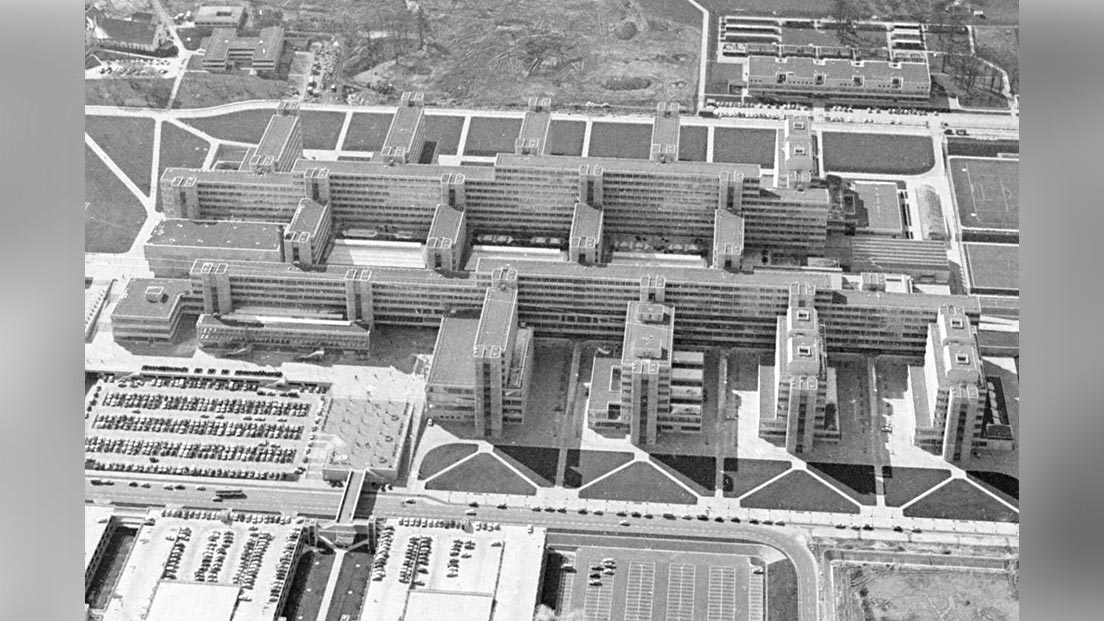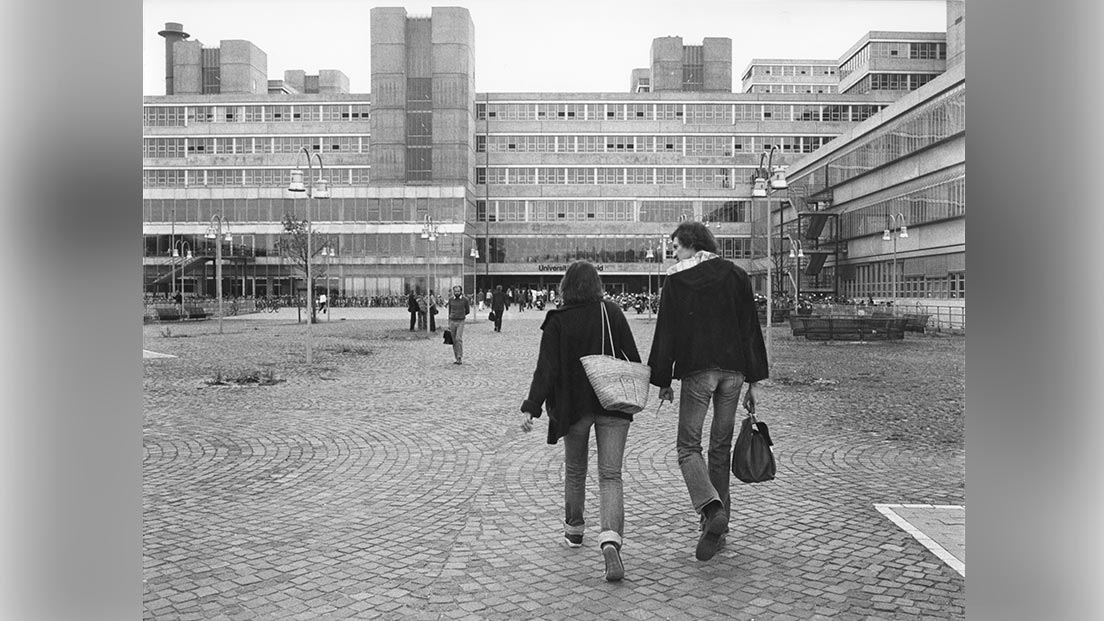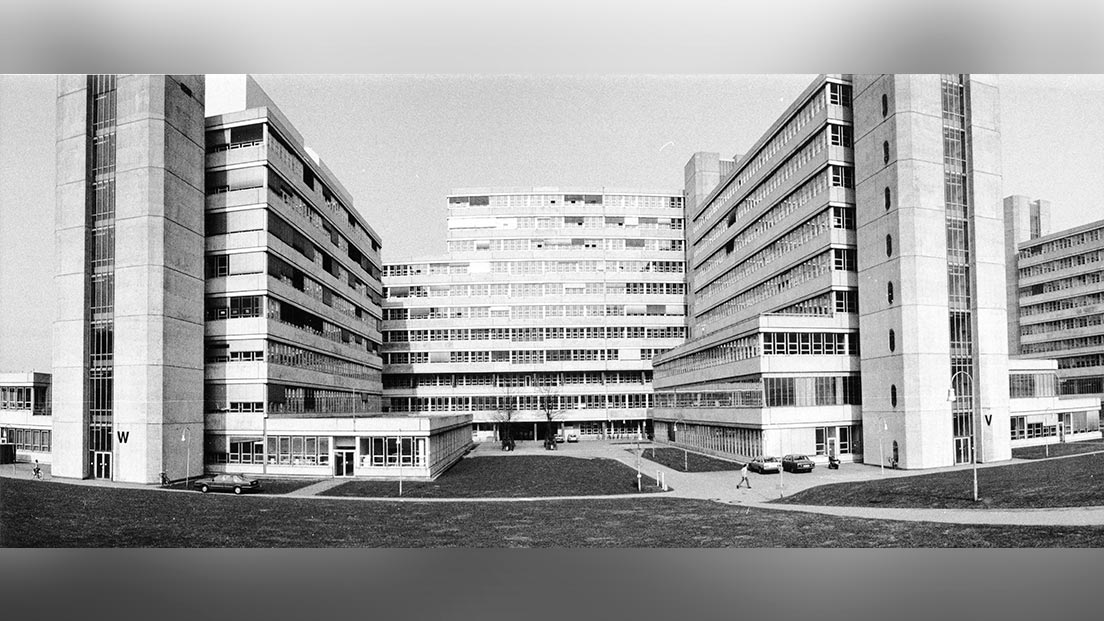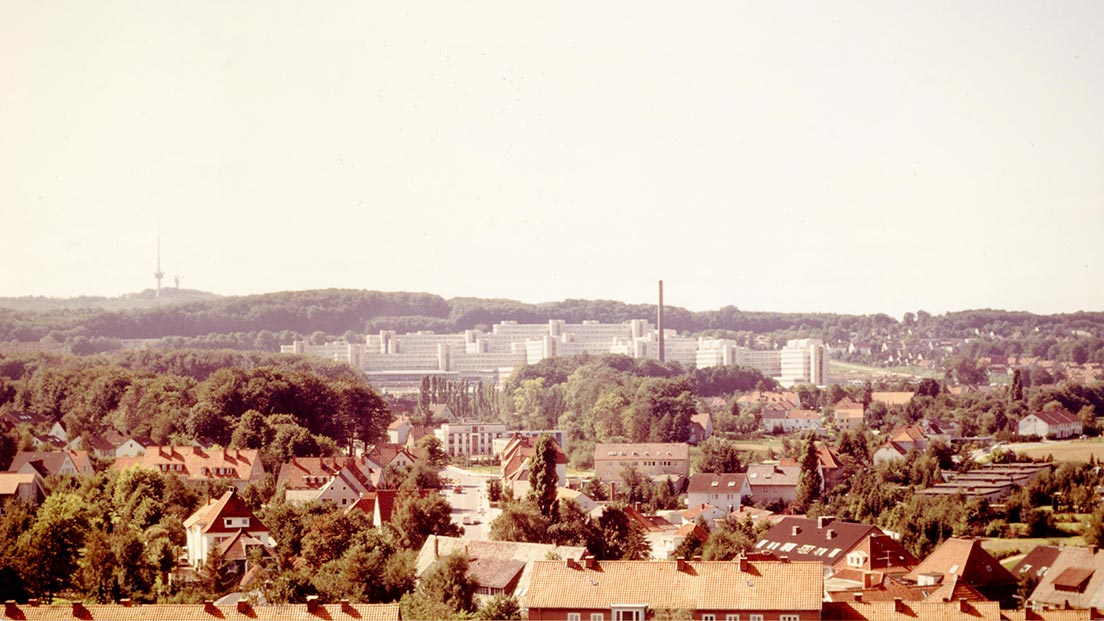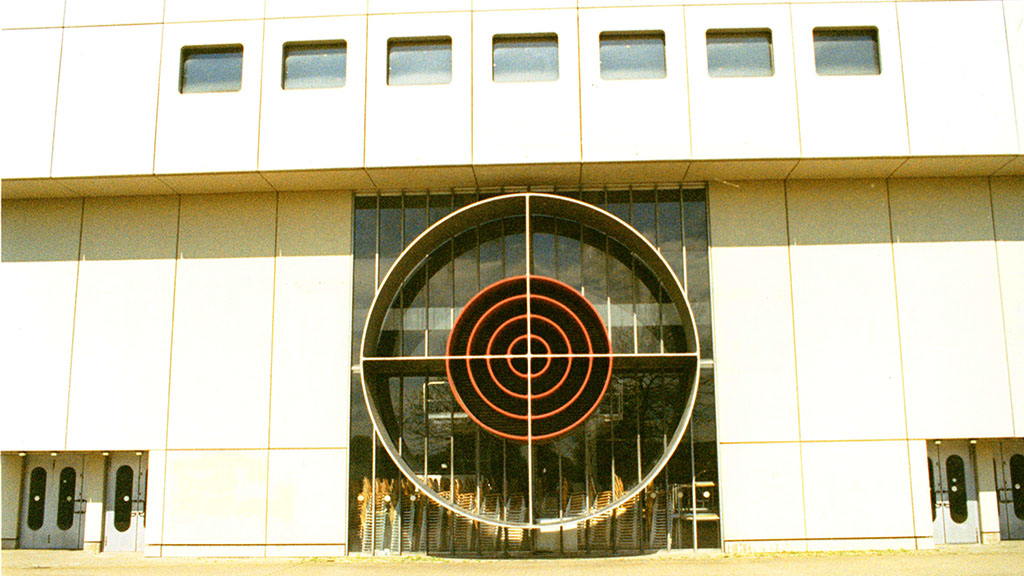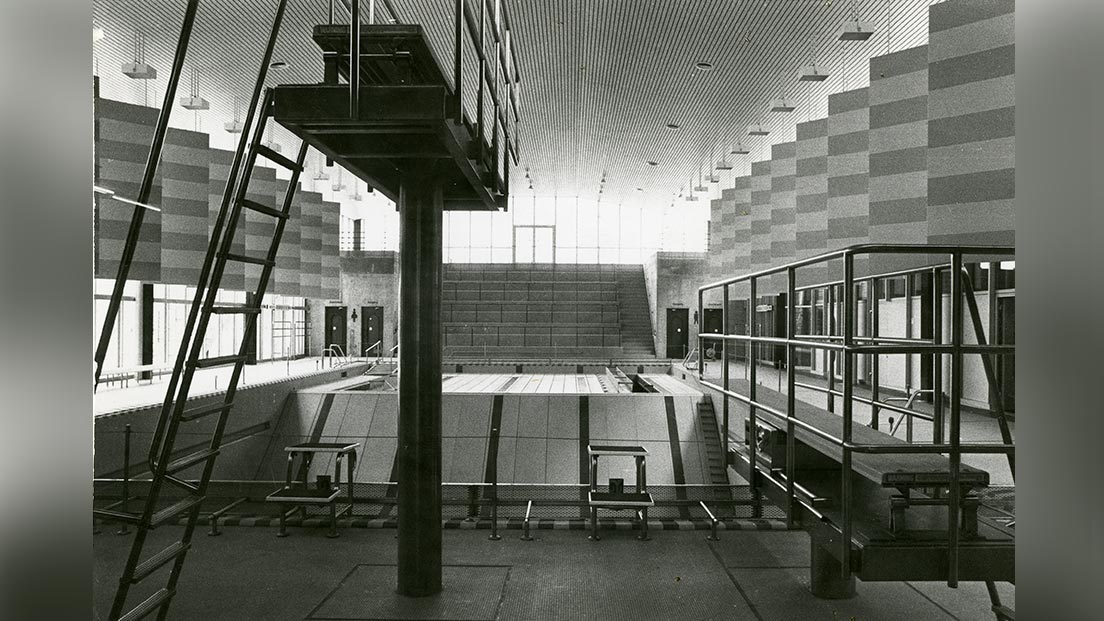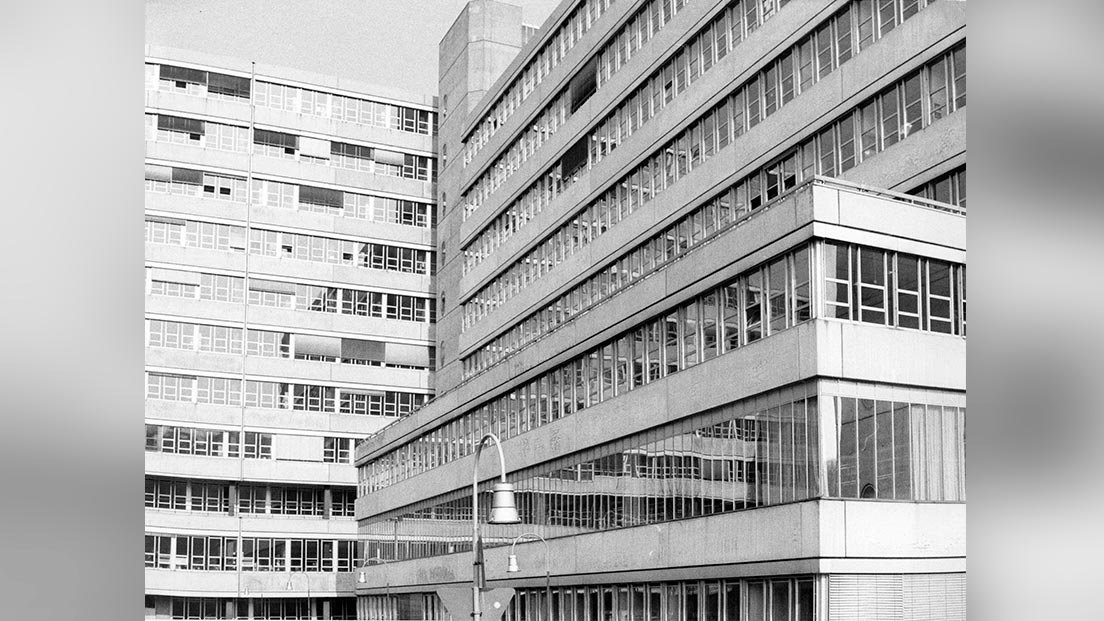–
Source: Universitätsarchiv Bielefeld, FS 230
Architecturally, the building is characterised by two ridges, which structure the entire building into access sections. By varying the number of floors of the individual blocks, this design softens the monolithic overall impression of the building and imitates architecturally the nearby Teutoburg Forest. From the ridges, the transverse structures (the so-called “teeth”) branch off away from the centre of the complex. Bridging tracts connect the two ridges to each other as well as to the central hall. It has the advantage of efficiently interlinking the individual parts of the building.
Most of the faculties are located in the transverse blocks. The lecture halls and the library are accessible from the main hall. The placement of the library is particularly notable. It is designed as a spatial continuum on the first floor (library level): Subject libraries can be accessed from the hall, but they are also connected to each other, so that you can easily cross disciplinary boundaries. The hall with a surrounding gallery is planned and conceived as a “central communication axis”, a “forum” for encounters, which also illustrates the interdisciplinary claim of the Reform University at Bielefeld architecturally. This is bordered on one side by the swimming pool and the Café Westend and on the other side by the Auditorium Maximum with the Chilean mural.
Brutally functional
Up to the present day, this brutalist building has divided critics. In terms of functionality, however, one can hardly criticise the architectural design, since the building was originally planned for a maximum of 10,000 students and still functions with twice this number to this day. The concept of the building is most clearly expressed in the following, still relevant quotation by Professor Dr. Dietrich Storbeck, vice rector for Structure, Planning and Construction during the building phase: “The universities of our day are large scientific operations; economic and technological reasons necessitate this, but the structure of the modern university also pushes in this direction. It is therefore only logical to plan and construct a new university as a large enterprise”.

